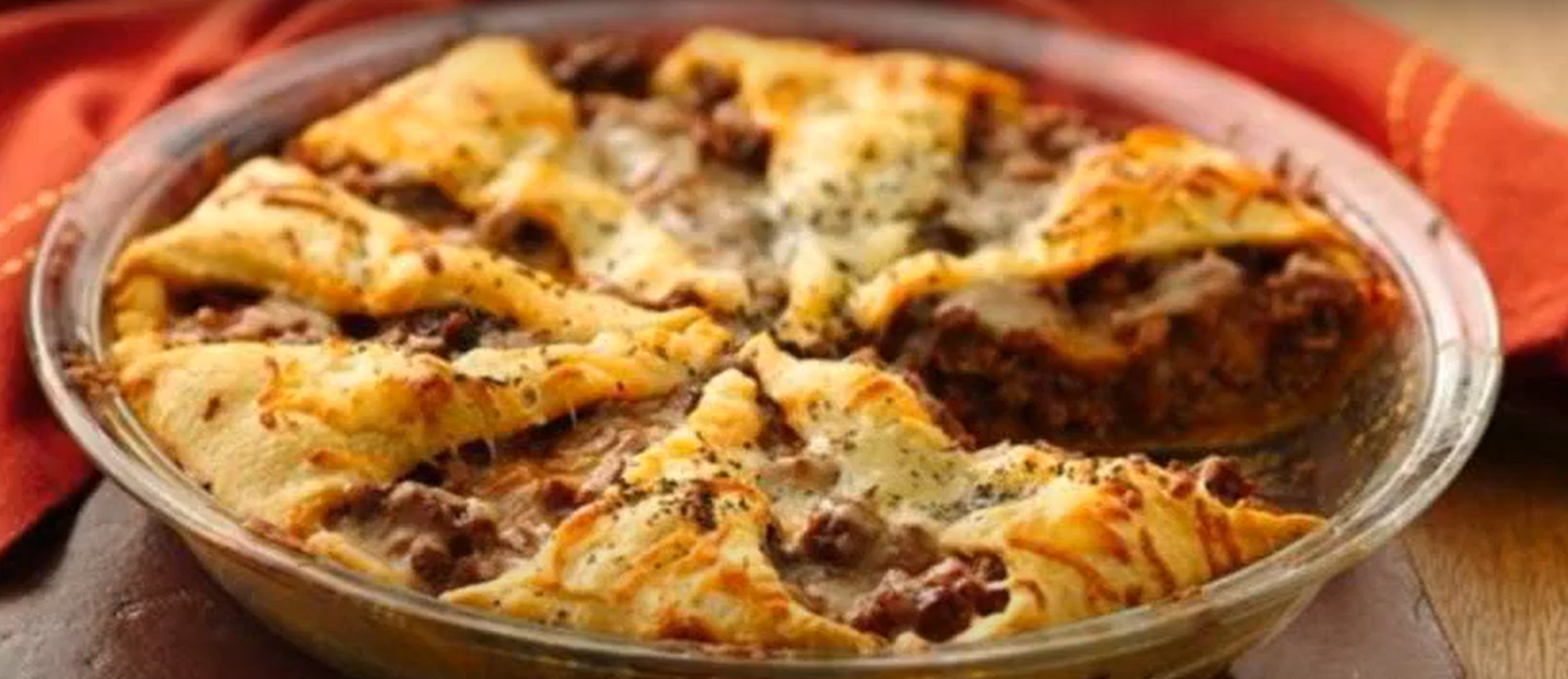Italian Crescent Casserole, a delightful fusion of Italian flavors and convenient American cooking, has become increasingly popular for its simplicity and delicious taste. This dish masterfully combines the hearty, rich flavors of traditional Italian cuisine with the ease and quickness that suit a fast-paced lifestyle. Its popularity soars, particularly among those who seek a satisfying meal without the lengthy preparation time. Ideal for busy weeknights, family gatherings, or potlucks, the Italian Crescent Casserole stands out as a versatile dish that appeals to a wide range of palates.
The ease of preparation is a significant factor in its widespread appeal. Typically requiring minimal cooking skills, this casserole is a perfect starting point for novice cooks while also offering room for creativity for more experienced chefs. Its straightforward approach, involving layering ingredients and baking, makes it a go-to recipe for a fulfilling meal that can be quickly assembled with minimal fuss.
Basic Ingredients and Variations
At its core, the Italian Crescent Casserole primarily features crescent roll dough, a meaty sauce, usually made with ground beef, and a blend of cheeses. The crescent dough forms a soft, flaky base and topping, encasing the rich, savory filling. Ground beef, seasoned and cooked with marinara sauce, creates a robust and flavorful layer, while the cheeses, typically mozzarella and Parmesan, add a creamy, gooey texture that perfectly complements the meat.
The versatility of this casserole allows for numerous variations, catering to different tastes and dietary preferences. While ground beef is commonly used, one can easily substitute it with other meats like ground turkey, chicken, or even plant-based alternatives for a vegetarian twist. The cheese blend can also be varied; some might prefer a sharper flavor with more Parmesan, while others might opt for the mildness of mozzarella. Additionally, incorporating vegetables like spinach, mushrooms, or bell peppers can enhance the nutritional value and add an extra layer of flavor.
This adaptability not only makes the Italian Crescent Casserole a flexible recipe but also a canvas for culinary creativity, allowing each cook to imprint their personal touch on this beloved dish.
Origins of the Dish
The Italian Crescent Casserole, while not rooted deeply in historical Italian cuisine, represents a delightful blend of Italian-inspired flavors adapted to suit modern, fast-paced lifestyles. This dish does not trace back to old Italian traditions but rather emerges from a contemporary fusion of cuisines, primarily influenced by Italian and American cooking styles. The casserole reflects the simplicity and convenience valued in American kitchens, combined with the rich, robust flavors characteristic of Italian food.
Culturally, the dish signifies a melting pot of culinary practices, showcasing how traditional Italian ingredients and flavors can be reimagined in a new context. It’s a testament to the adaptability and evolution of cuisine, particularly in a diverse and rapidly changing culinary landscape like that of the United States. In essence, the Italian Crescent Casserole exemplifies how food transcends borders, adapting and evolving to meet new tastes and lifestyles.
Traditional vs. Modern Adaptations
Comparing traditional Italian casseroles to the modern Italian Crescent Casserole illuminates the evolution of culinary practices. Traditional Italian casseroles, like lasagna or baked ziti, are known for their layers of pasta, rich sauces, and cheeses, often requiring substantial preparation time. These dishes reflect the regional diversity of Italy and its emphasis on slow cooking and robust flavors.
In contrast, the Italian Crescent Casserole represents a more contemporary approach. It maintains the essence of Italian flavors—rich sauces and cheeses—but simplifies the process using crescent roll dough and quicker assembly methods. This adaptation suits today’s fast-paced lifestyle while still delivering a comforting, flavor-packed meal.
The evolution of this dish in contemporary kitchens highlights a broader trend in cooking: the blending of traditional techniques with modern conveniences. It showcases how recipes adapt over time, merging cultural influences to create dishes that are both new and familiar, suitable for today’s diverse and dynamic culinary demands.
Step-by-Step Recipe Guide
To create a delicious Italian Crescent Casserole, begin by preheating your oven. This ensures a consistent cooking temperature from the start.
Prepare the meat sauce:
Cook your choice of ground meat (beef, chicken, turkey, or a vegetarian alternative) in a skillet until it’s browned. Add in your preferred pasta sauce, seasoning it to taste with Italian herbs.
Prepare the Crescent Dough:
Unroll your crescent roll dough and press it into the bottom of a greased baking dish, forming the first layer. If using traditional crescent rolls, make sure to seal the perforations.
Assemble the casserole.
Spoon the meat sauce over the dough layer, followed by a generous sprinkling of shredded cheese (mozzarella and Parmesan are popular choices).
Add the final layer:
Place another layer of crescent dough on top, sealing any gaps to encase the filling.
Bake the casserole:
Bake in the preheated oven until the dough is golden brown and the cheese is bubbly. This usually takes about 20–25 minutes.
Rest and Serve:
Let the casserole rest for a few minutes before serving. This allows the layers to set, making it easier to cut and serve.
Tips for Layering and Baking
- Ensure even distribution of the meat sauce to avoid soggy or undercooked spots.
- Press the dough layers firmly into the corners and edges of the dish to prevent them from lifting during baking.
- Adjust the baking time based on your oven and the depth of your dish. Deeper casseroles may require longer baking.
Expert Tips and Tricks
Professional Advice for Perfecting the Casserole
Pre-cook the meat properly.
Ensure the meat is thoroughly cooked before layering. This prevents any raw meat taste and enhances the flavor.
Balance the moisture:
Too much sauce can make the dough soggy, while too little can result in a dry casserole. Aim for a moist, but not wet, filling.
Choose the right cheese:
Use good-melting cheese for the best texture. Mozzarella is a great choice for its meltability and mild flavor.
Common Mistakes and How to Avoid Them
Avoid overfilling:
Overloading the casserole can cause spillage and uneven cooking. Stick to the recommended amounts of filling.
Check the dough.
The bottom layer of dough should be fully cooked. If it’s underdone, consider lowering your oven rack or increasing the baking time.
Let it rest.
Cutting the casserole too soon can cause it to fall apart. Allow it to set for a few minutes after baking.




